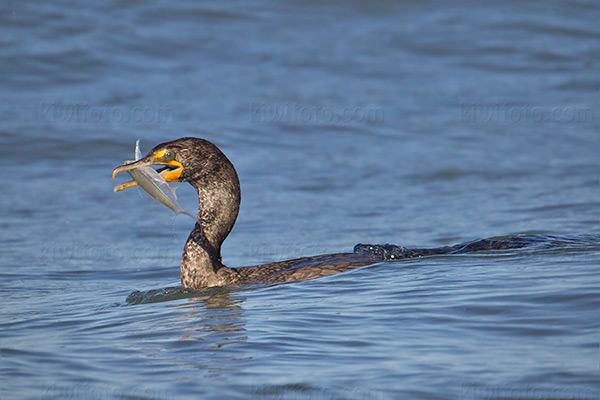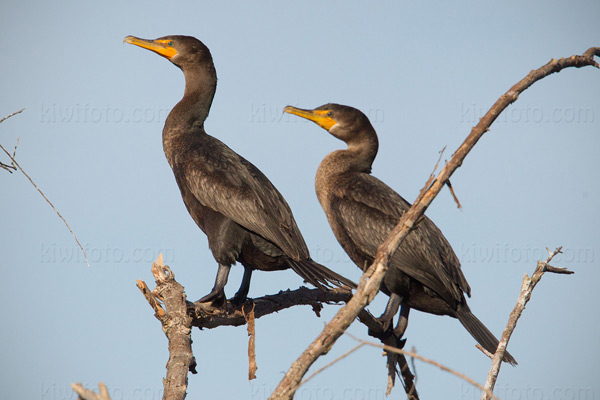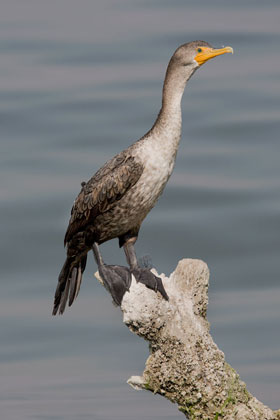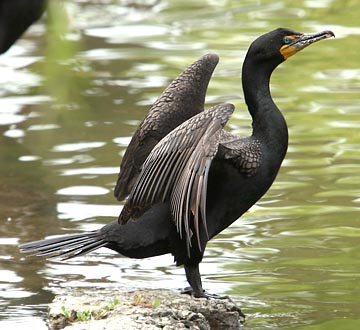GALLERIES > BIRDS > PELECANIFORMES > PHALACROCORACIDAE > DOUBLE-CRESTED CORMORANT [Phalacrocorax auritus] [plot on map]
Location: Playa del Rey (Dockweiler State Beach), CAGPS: 33.9N, -118.4W, elev=14' MAP Date: April 26, 2014 ID : B13K6107 [4896 x 3264]
|
|

|
Location: Gray Lodge, Sacramento, CaliforniaGPS: 39.3N, -121.8W, elev=69' MAP Date: December 9, 2012 ID : B13K1069 [4896 x 3264]
|
|

|
Location: Salton Sea, CAGPS: 33.2N, -115.6W, elev=-232' MAP Date: August 15, 2009 ID : 7C2V1654 [3888 x 2592]
|
Location: Monterey, CAGPS: 36.6N, -121.9W, elev=14' MAP Date: May 26, 2007 ID : ? [3888 x 2592]
|

|
SPECIES INFO
The Double-crested Cormorant (Phalacrocorax auritus) is a member of the cormorant family of seabirds. It occurs along inland waterways as well as in coastal areas and is widely distributed across North America. Once threatened by use of DDT, the numbers of this bird have increased markedly in recent years.
Alternate common names of this bird include Crow-duck, Farallon Cormorant, Florida Cormorant, Lawyer, Shag, Devil Bird, and Taunton turkey.
The Double-crested Cormorant is a large black bird 74–91 cm (29"–36") long, with a wingspan up to 132 cm (52"). It has a long tail and a yellow throat-patch, and can appear to have a green sheen in certain lighting. The white double head crest is seen for a short period during the breeding season in western birds; it is duller in eastern birds. Juveniles are brown with a white face, foreneck, and breast.
A very common and widespread species, it winters anywhere that is ice-free along both coasts, as far north as southern Alaska (on the west coast) and southern New England (on the east coast). It can be found as far south as Mexico and the Bahamas. It migrates from the coldest parts of its breeding range, such as eastern Canada, and has occurred in Europe as a very rare vagrant, for example in Great Britain, Ireland and the Azores.
The Double-crested Cormorant swims low in the water, often with just its neck and head visible, and dives from the surface. It uses its feet for propulsion and is able to dive to a depth of 1.5–7.5 m (5–25 feet) for 30–70 seconds. After diving, it spends long periods standing with its wings outstretched to allow them to dry, since they are not fully waterproofed. This species flies low over the water, with its bill tilted slightly upward, sometimes leaving the colony in long, single-file lines.
Food can be found in the sea, freshwater lakes, and rivers. Like all cormorants, the Double-crested dives to find its prey. It mainly eats fish, but will sometimes also eat amphibians and crustaceans. Fish are caught by diving under water. Smaller fish may be eaten while the bird is still beneath the surface but bigger prey is often brough to the surface before it is eaten. Cormorants regurgitate pellets containing undigested parts of their meals such as bones. These pellets can be dissected by biologists in order to discover what they ate.
Breeding occurs in coastal areas as well as near inland rivers and lakes. They build stick nests in trees, on cliff edges, or on the ground on suitable islands. They are gregarious birds usually found in colonies, often with other aquatic birds, and have a deep, guttural grunt call.
|
|




